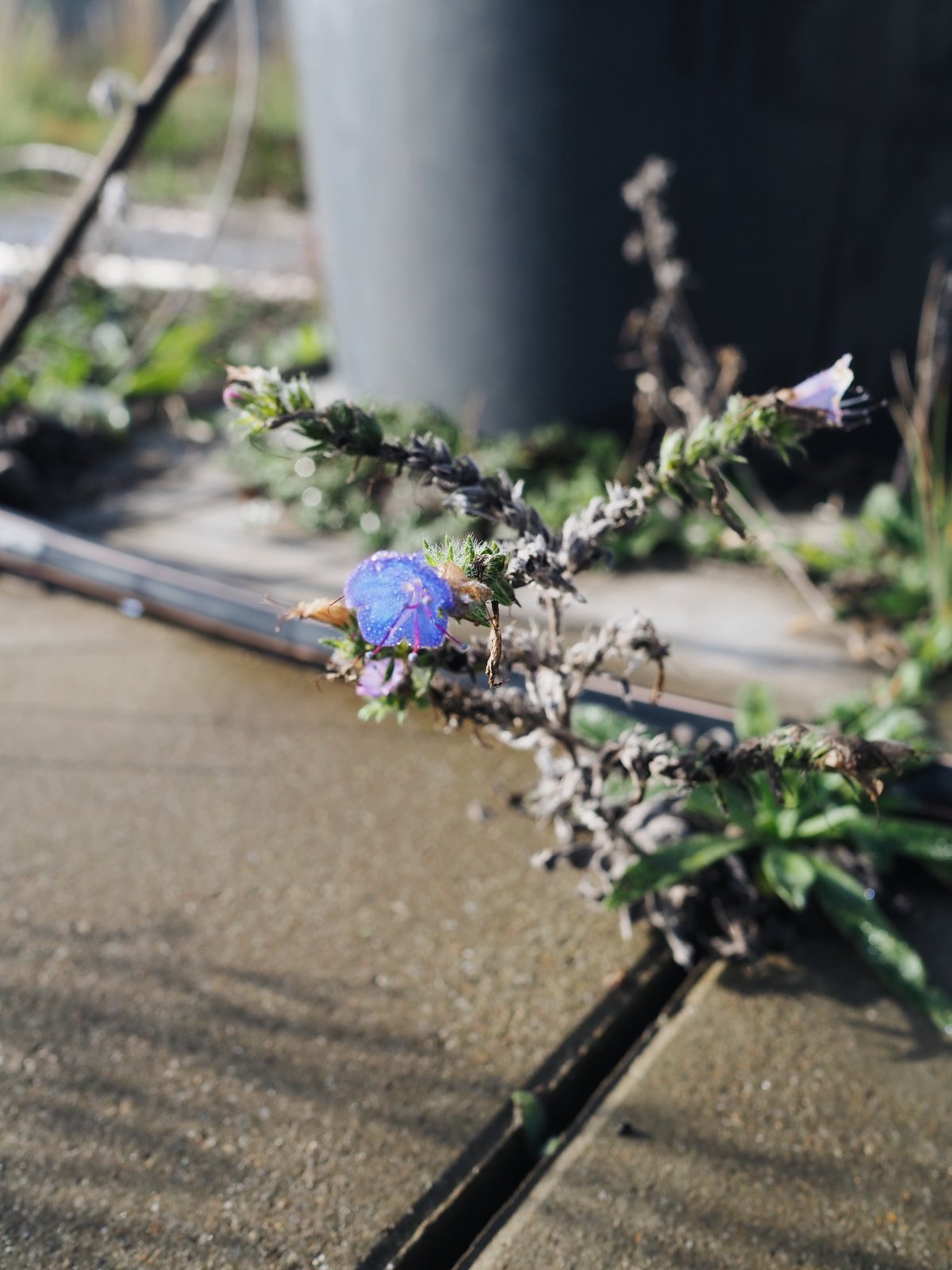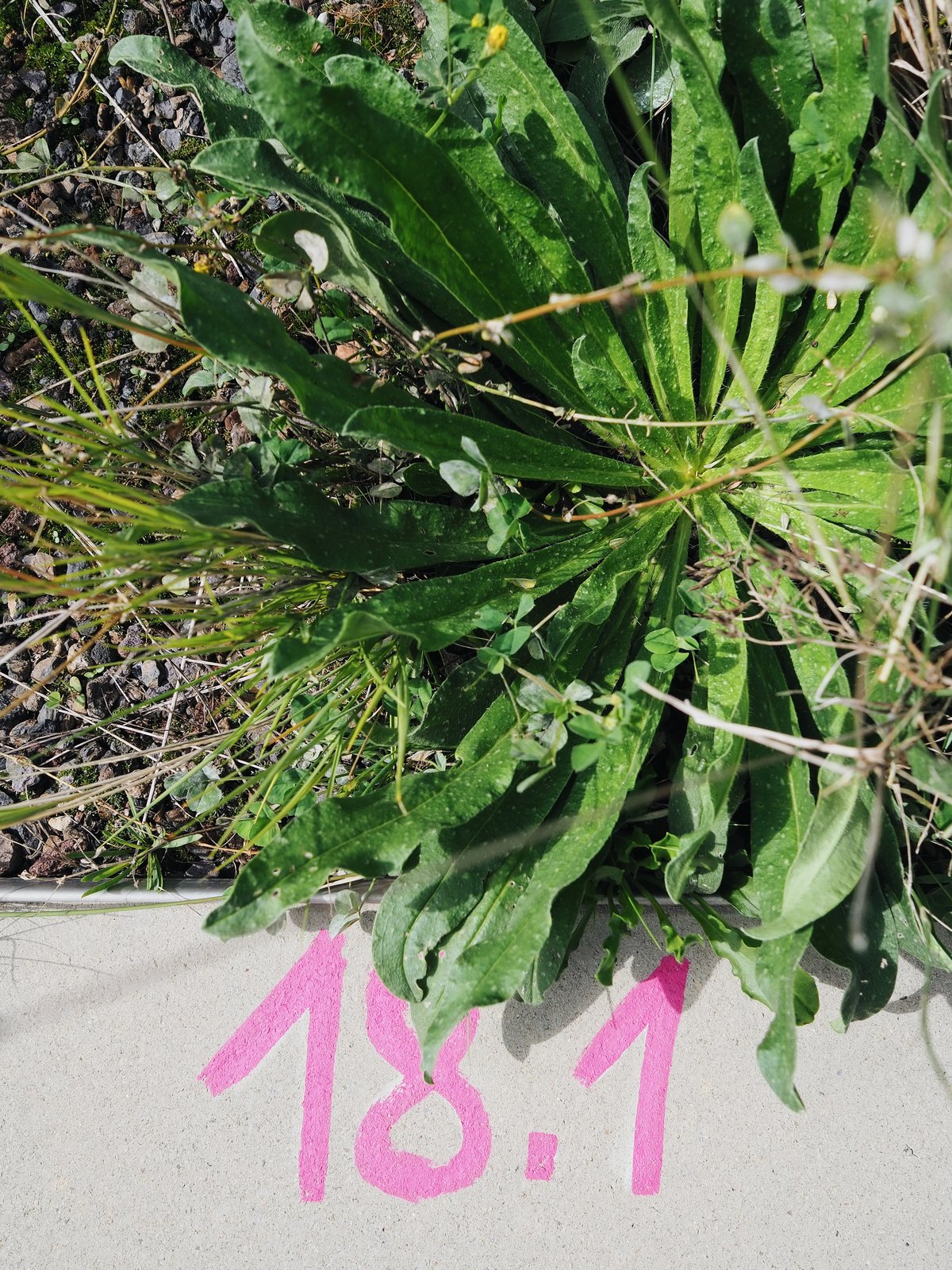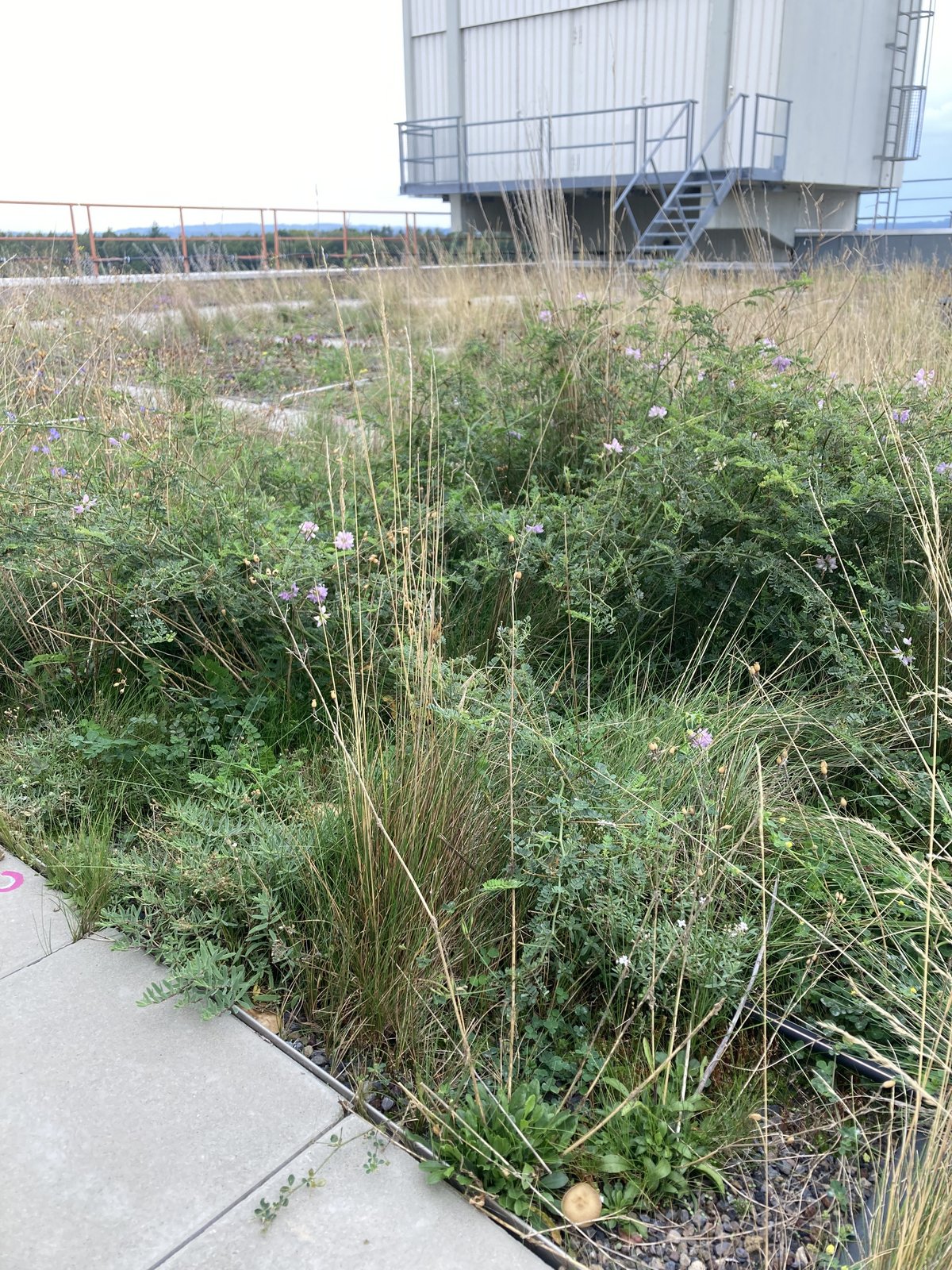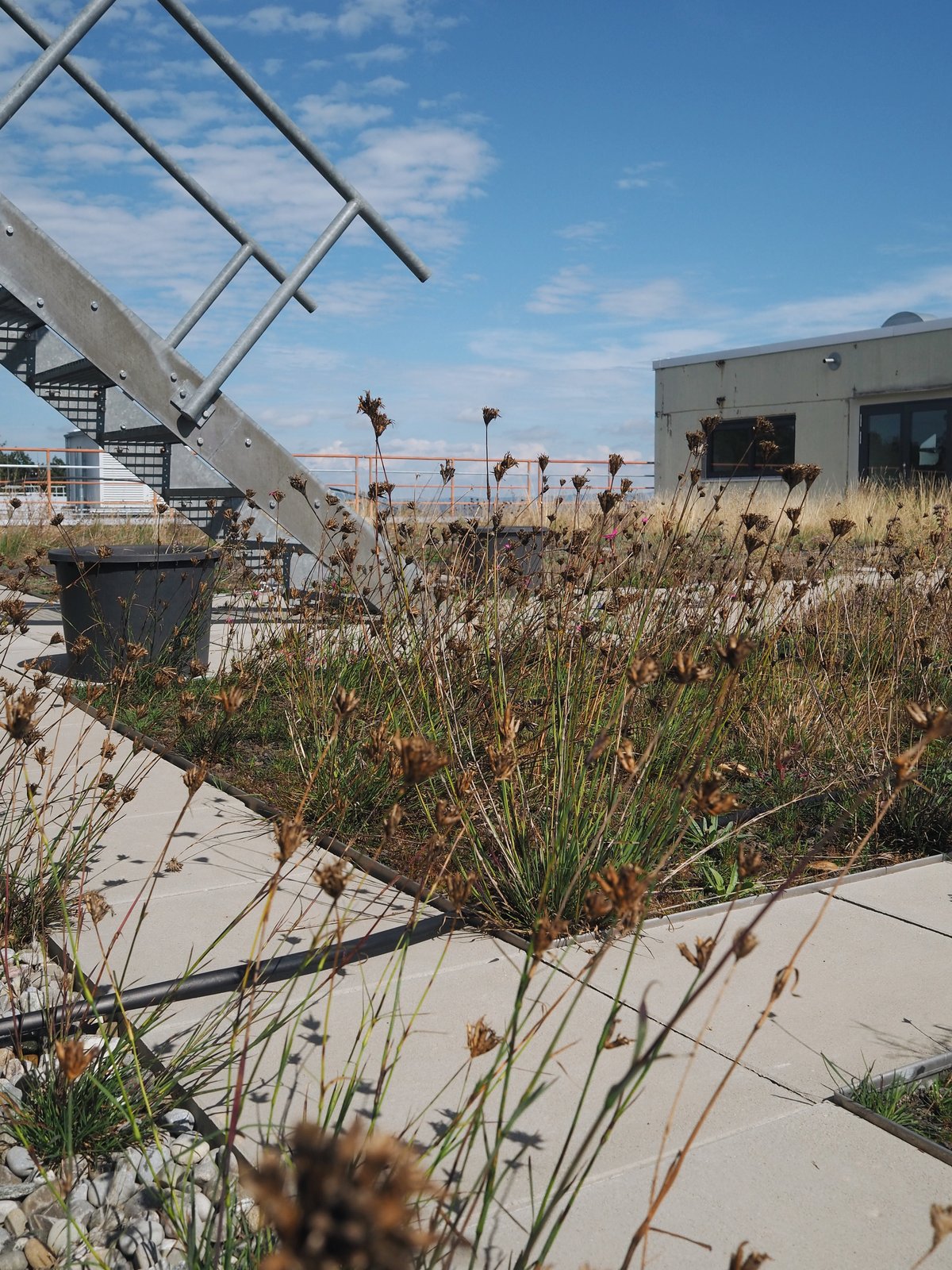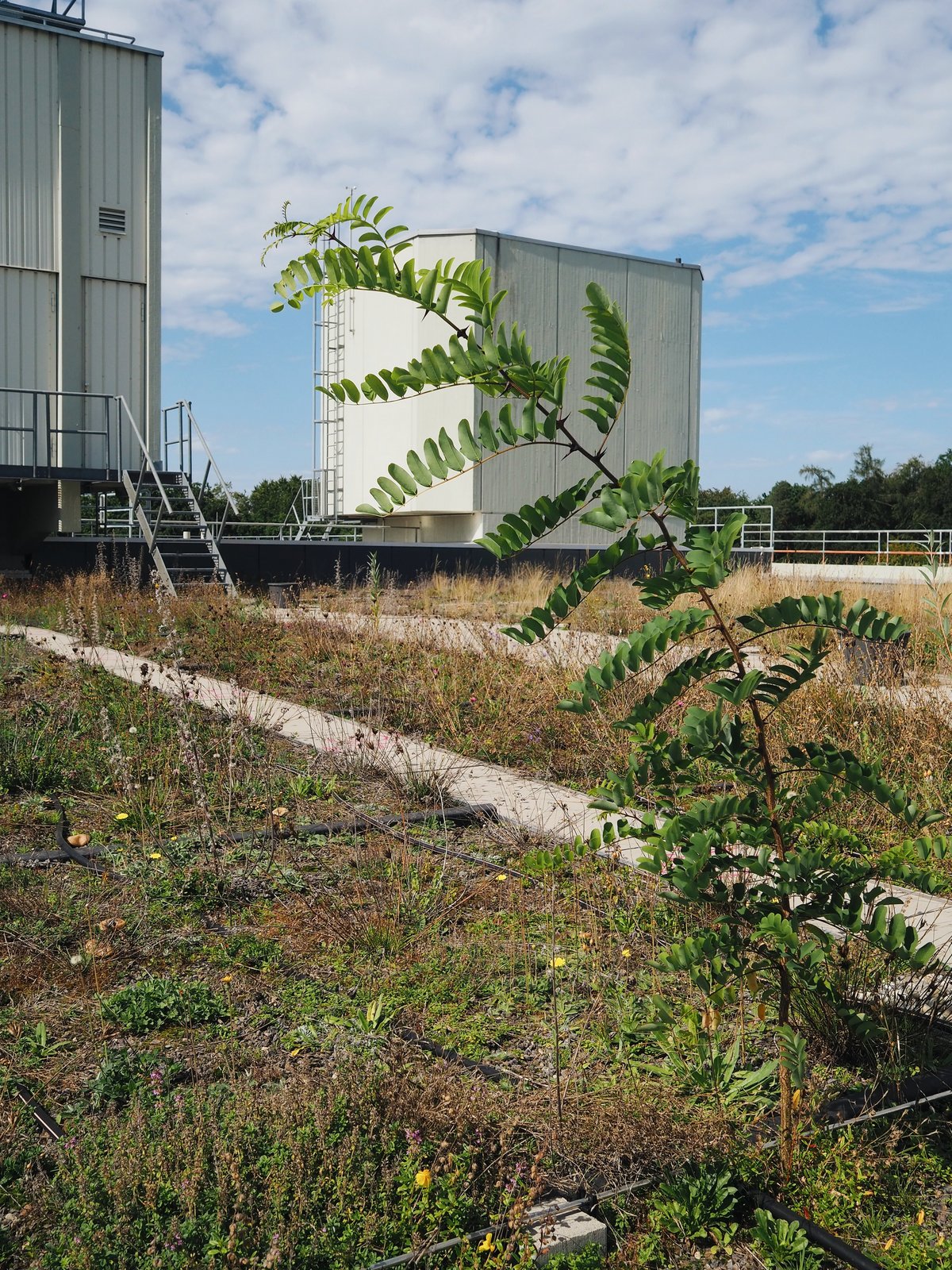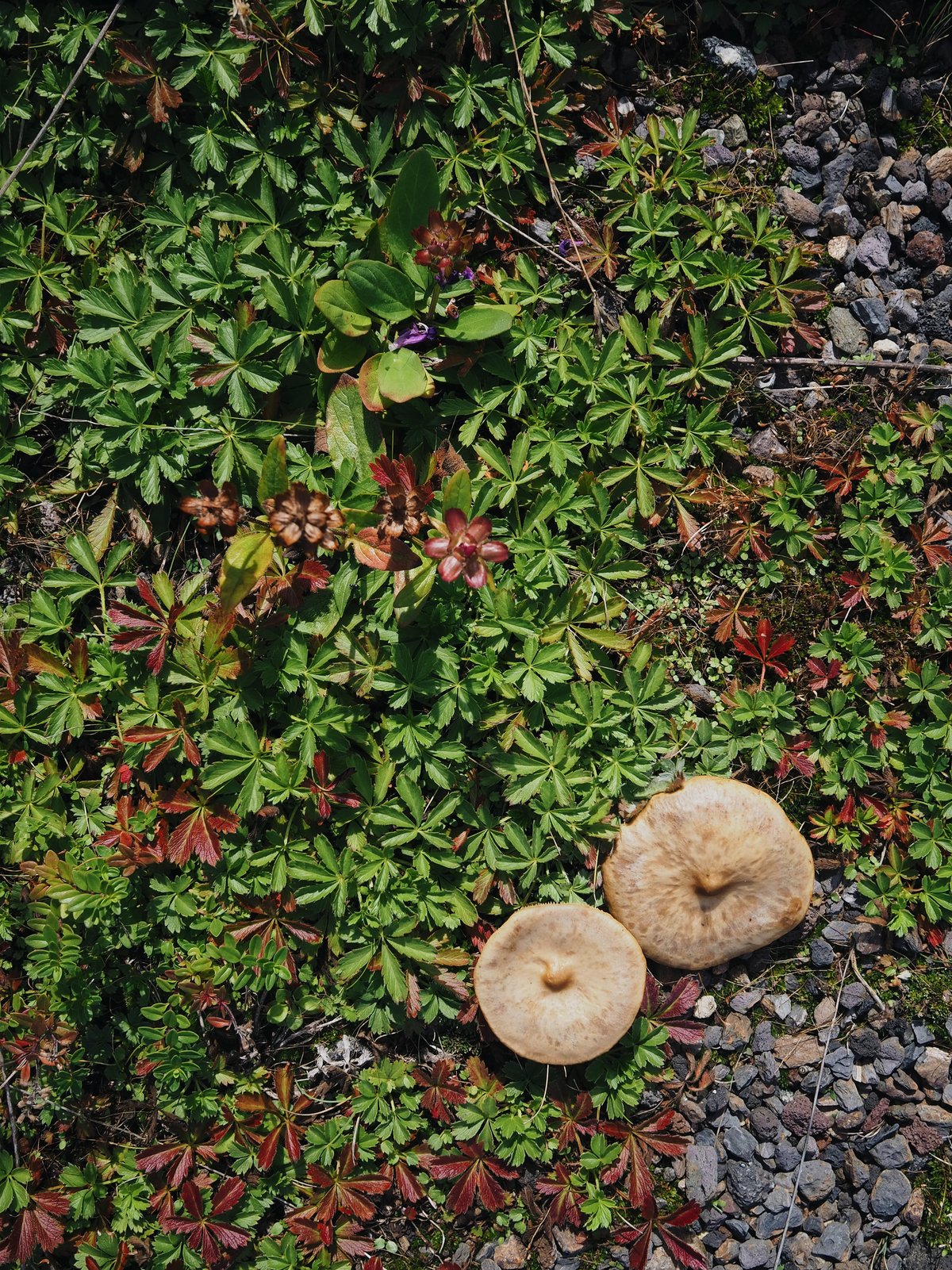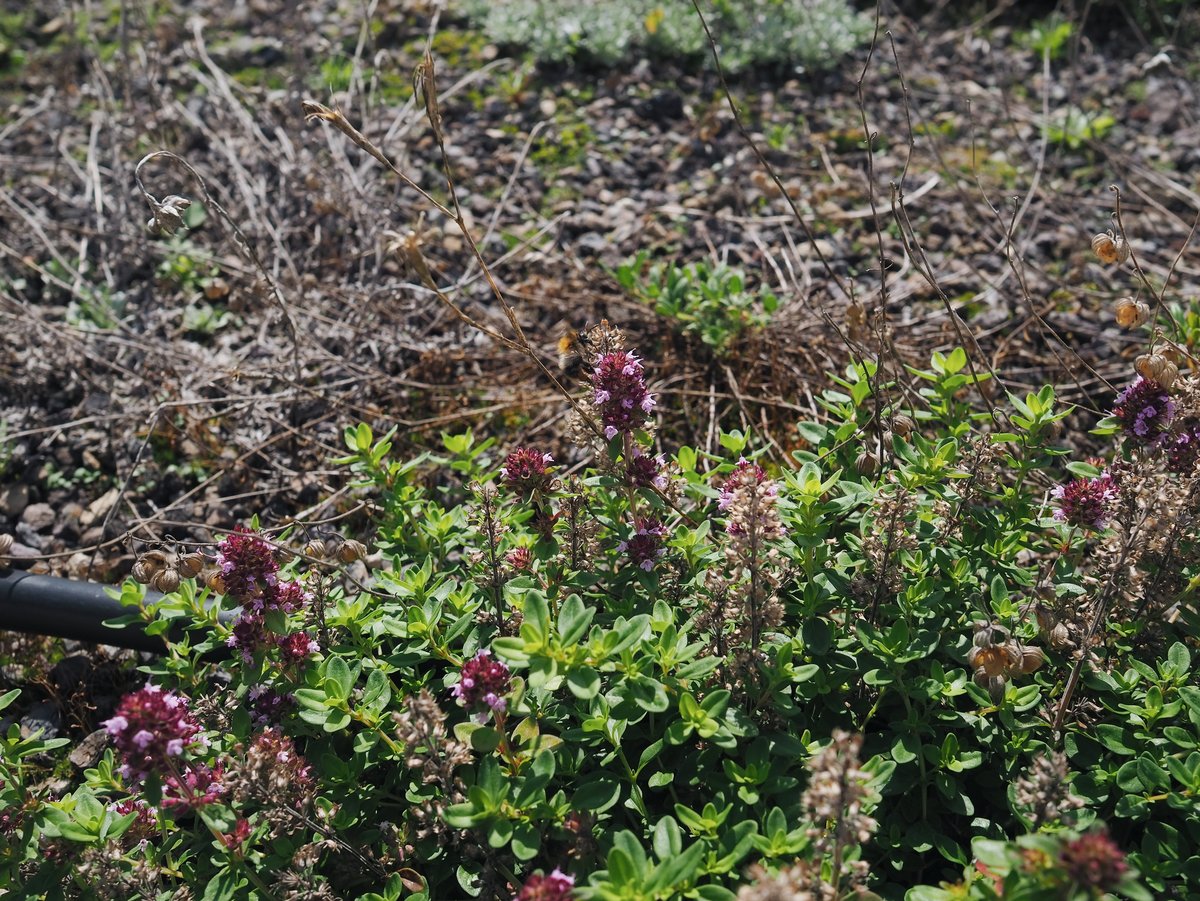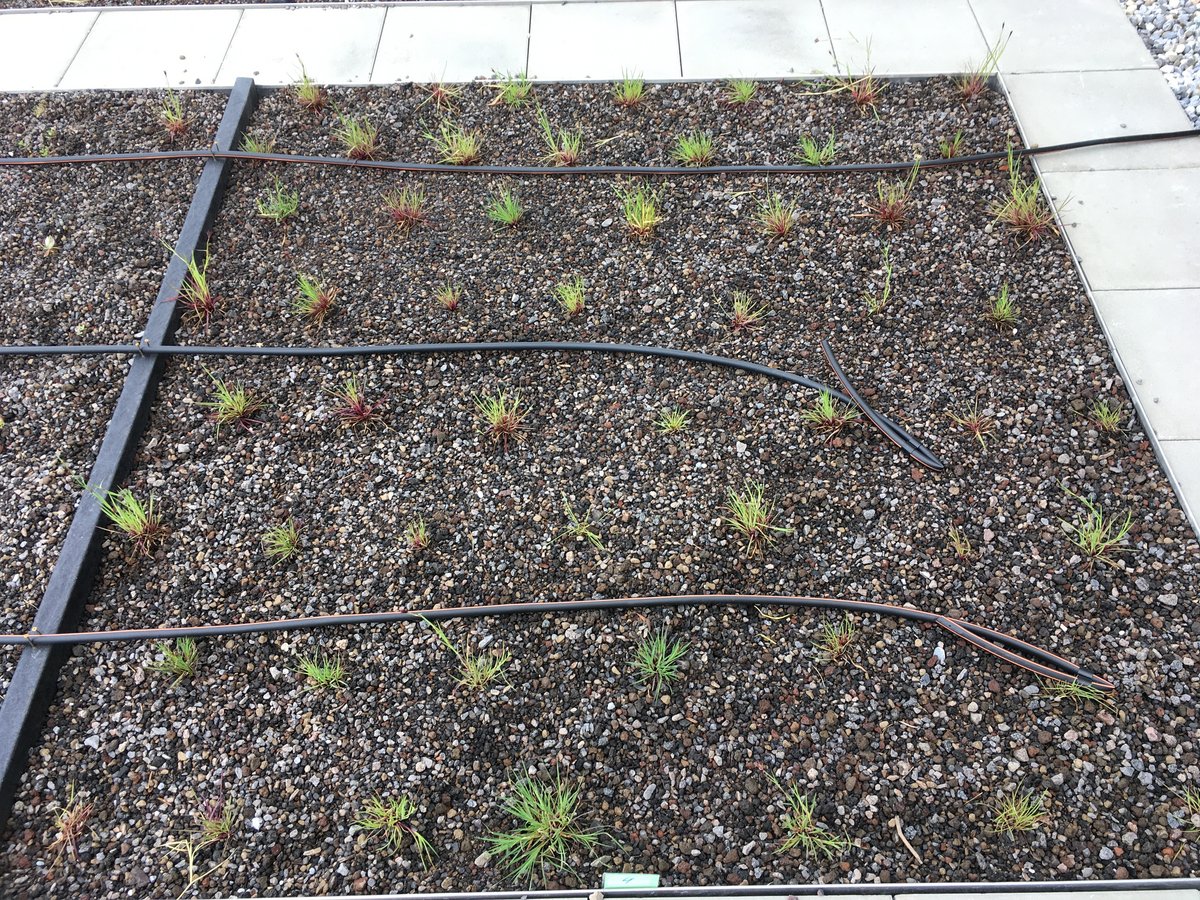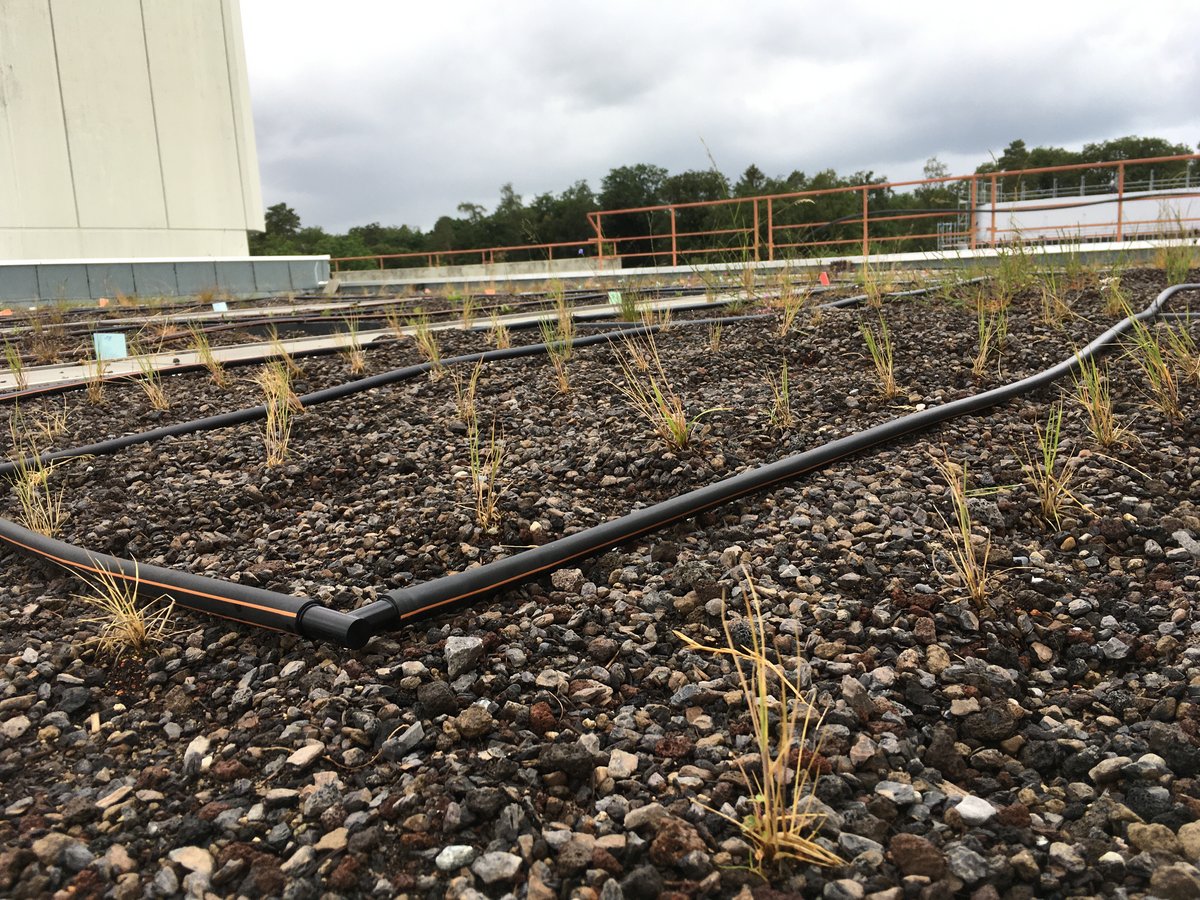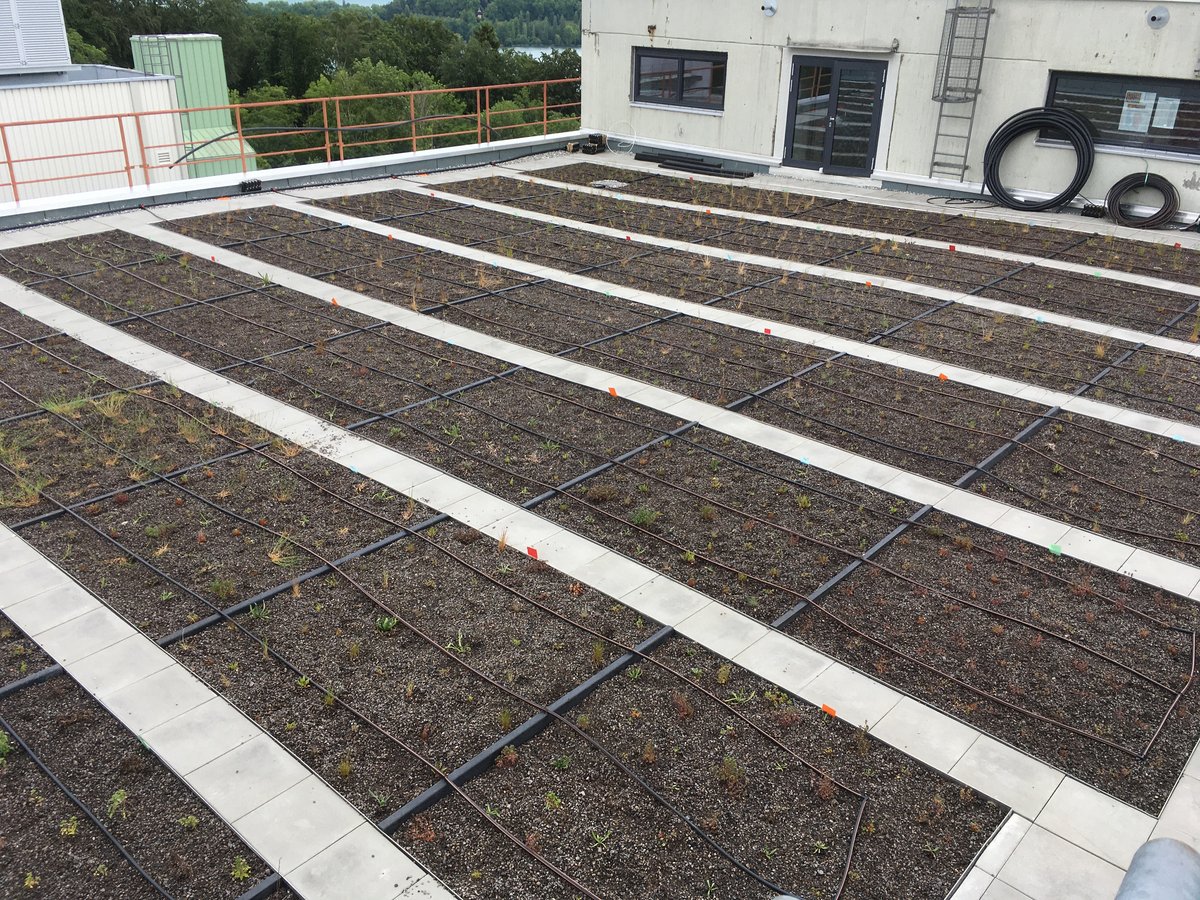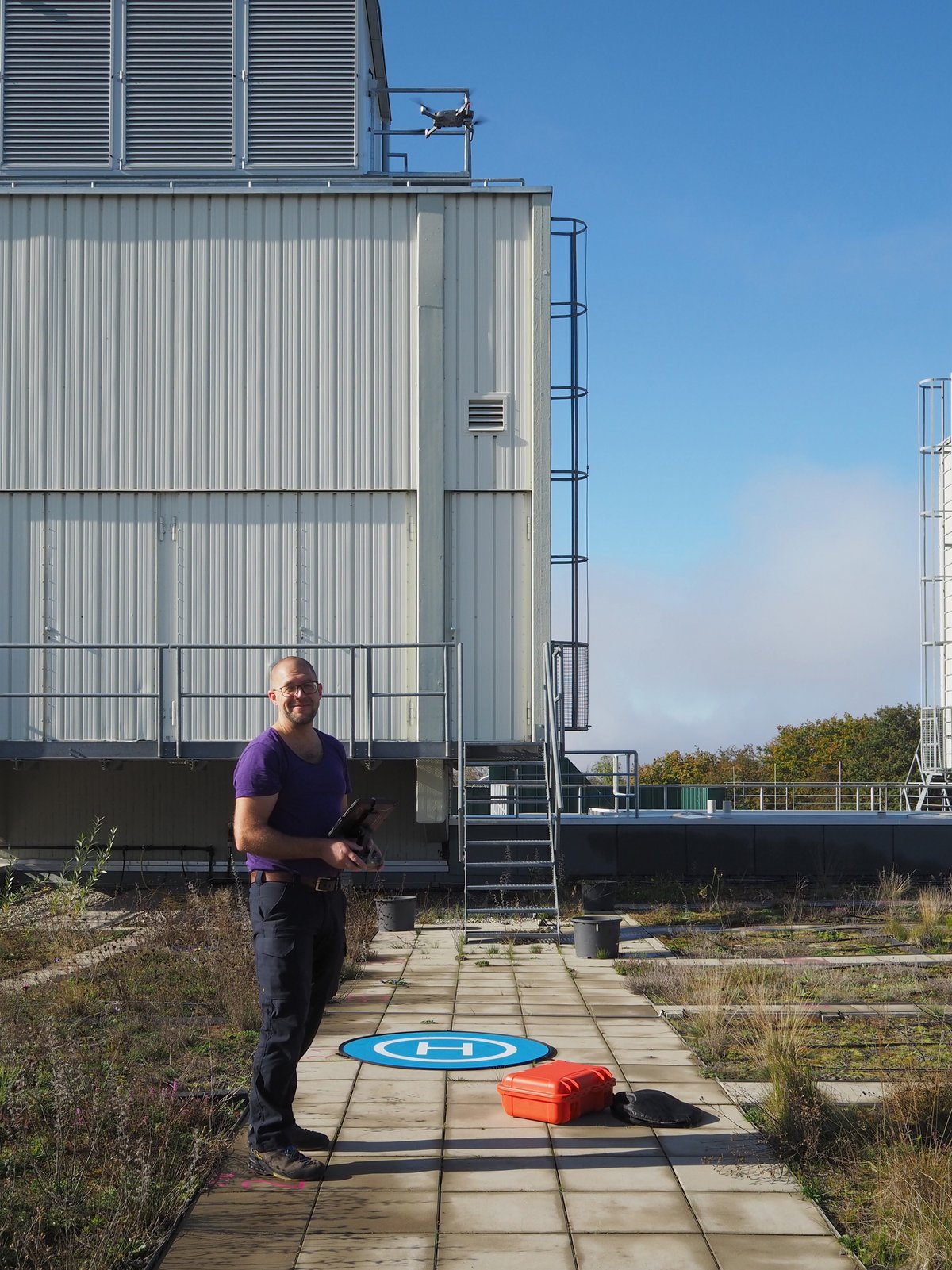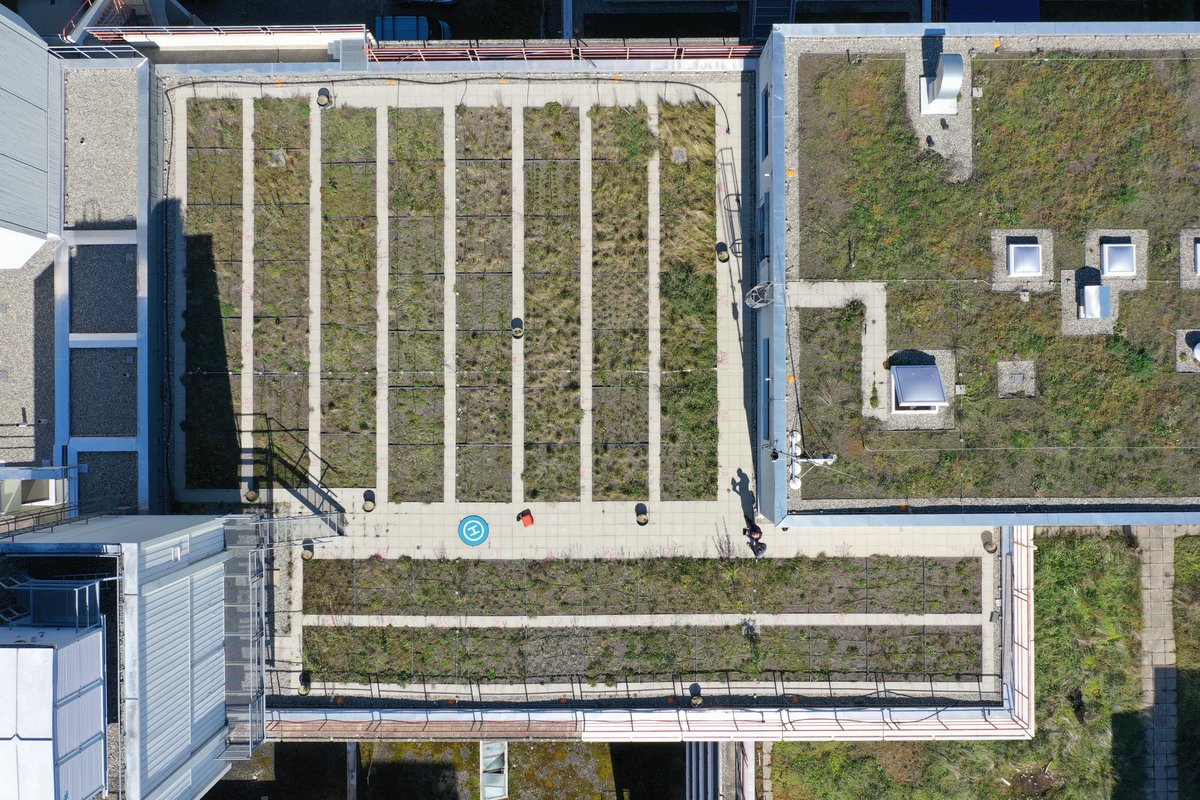
(Drone photo by Andreas Schuerkmann)
Green-Roof Biodiversity Experiment
Green roofs provide a great opportunity to increase biodiversity in urban environments, and might also contribute to cooling of buildings in summer.
Many green roofs have been planted with monocultures of exotic Sedum species. However, many native plant species from dry environments might also be suitable as green-roof plantings. Moreover, diverse plantings might have several benefits, as they might be more tolerant to e.g. long periods of drought, might reach a high cover more quickly, and could be more resistant to the spontaneous establishment of unwanted species (e.g. woody species that with their roots could damage the roof).
To assess how the initial number of plant species planted on a green roof affects the time required to cover most of the available roof area, the spontaneous establishment of plant species that were not planted on the roof as well as the diversity of arthropods, we started a green-roof biodiversity experiment on the roof of our university in spring 2020.
A total of 80 plots of 2 m × 2 m (10 cm deep) were planted with 1, 3, 6 or 12 species from a pool of 20 indigenous species, which are naturally found in dry grasslands. Each month during the growing season, we determine the plant cover in each plot from aerial drone pictures. At the end of each season, we remove the spontaneously established plant species to assess resistance against invasion.
In the coming years, we also plan to assess the colonization of the plots by arthropods.

